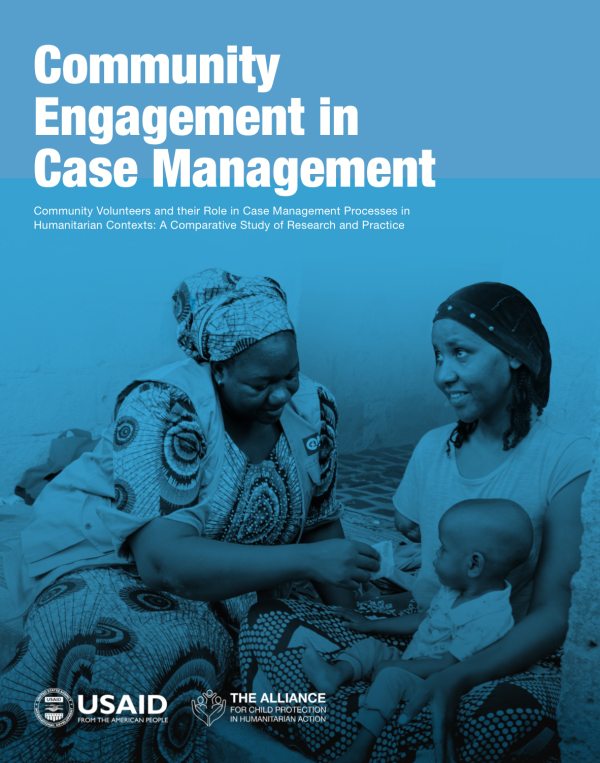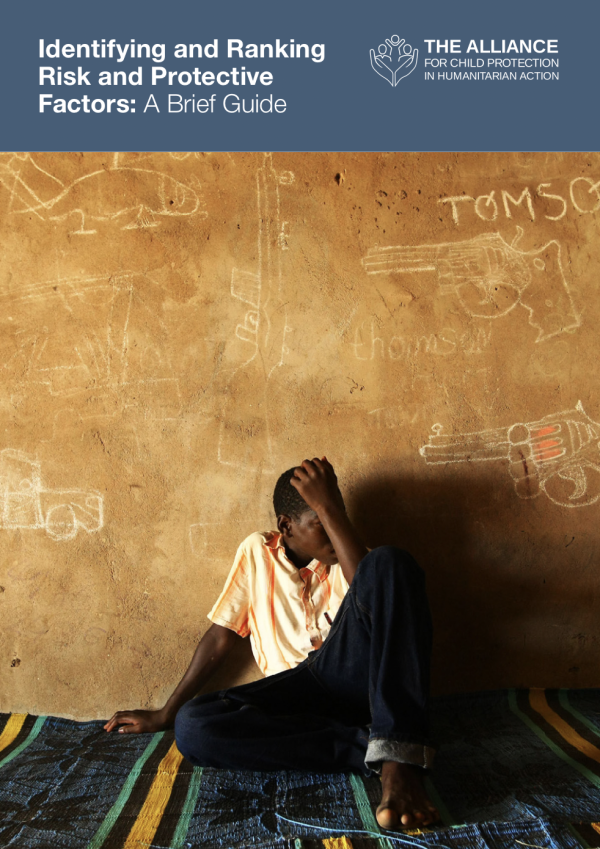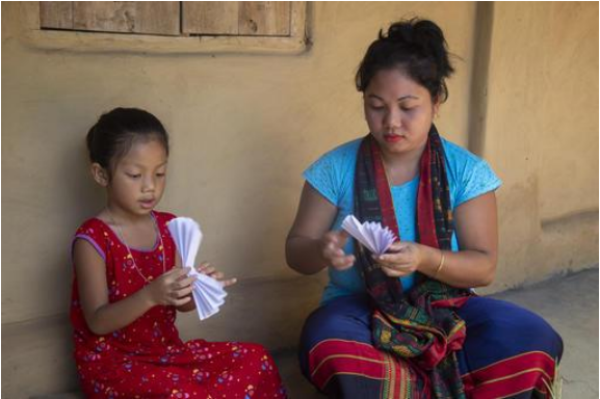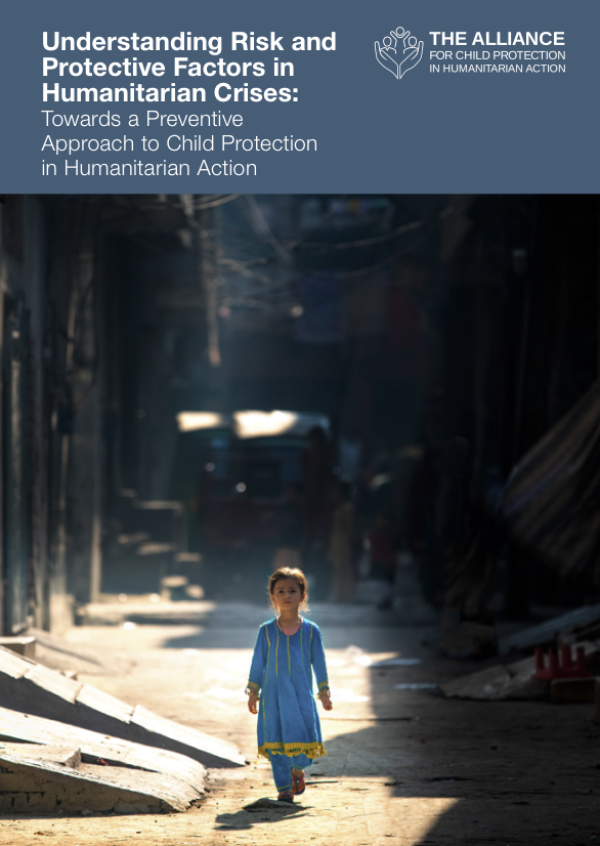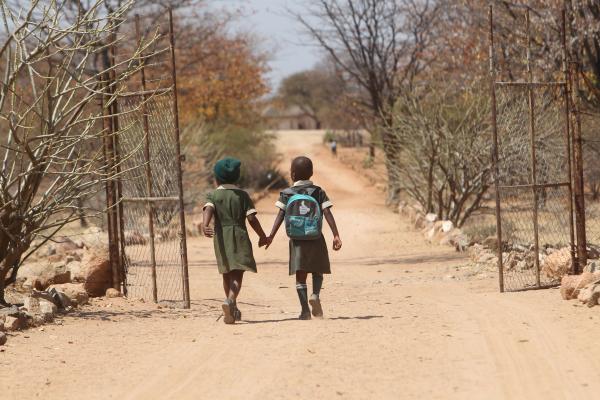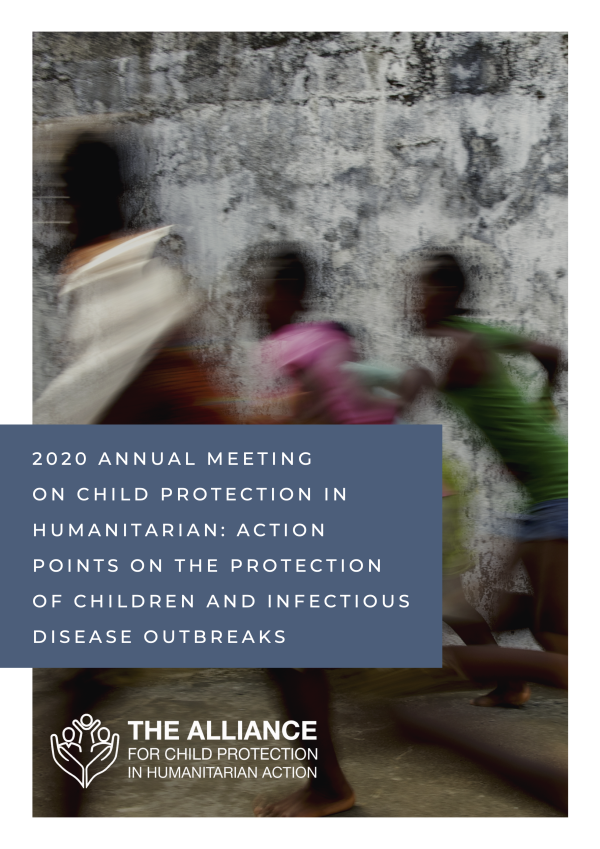
Search
Evidence Brief | Why Identifying Risk and Protective Factors is a Critical Step in Prevention Programming: Implications for Child Protection in Humanitarian Action
Humanitarian crises, including natural disasters, conflict, and infectious disease outbreaks threaten the health, safety and well-being of children, families, and communities. Risks to children in humanitarian settings are multiple and may include: family separation, recruitment into armed forces or...Webinar | Virtual Launch of the Community Engagement in Case Management Study
This webinar was held in English with simultaneous translation provided in French, Spanish and Arabic. Register via this Zoom link. The Alliance invites you to this special virtual event to launch the Community Engagement in Case Management Study! The study is meant to share with the global...Report | Community Engagement in Case Management
Community volunteers are an integral part of preventing and responding to cases of violence, abuse, neglect and exploitation of children in humanitarian settings. They have a deep understanding of their communities, and help to identify children who are at-risk, have experienced harm, or have been...PAST WEBINAR | ADVANCING CHILDREN’S MENTAL HEALTH AND PROTECTION IN HUMANITARIAN RESPONSE: LATEST EVIDENCE AND PRACTICE
Join World Vision & the Alliance as we we reflect on the latest findings of research into child friendly spaces by World Vision, Columbia University and AfriChild Uganda and discuss alternative approaches to promoting children’s mental well-being and protection in humanitarian response. Through an...Guidance | Identifying and Ranking Risk and Protective Factors: A Brief Guide
Recognizing the strategic importance of improving evidence- based approaches to preventing child protection issues, this guidance document was developed as part of the Alliance-led Prevention Initiative to support child protection humanitarian practitioners in their prevention programming efforts...COVID-19 Evidence Synthesis: Sexual and Gender-Based Violence
From April 2020 to December 2021, the COVID-19 mapping team published the COVID-19 Evidence Synthesis series as a periodic digest of COVID-19 related resources (guidance, news, and academic articles), with the purpose to identify emerging child protection risks, responses, and apparent resource gaps...Survey Results – Updating and Expanding the Case Management Training Package
In February, an online survey was conducted for everyone involved in child protection case management in humanitarian settings to ‘ have their say’ in efforts to update the inter-agency case management training package. The Alliance and its Case Management Task Force would like to thank the 469...Standards to Work Across Sectors
Millions of children are facing increasingly complex humanitarian crises. Helping them cope and recover takes a wide range of support, including specialised child protection interventions. But no single sector has all of the knowledge, skills and resources to fully prevent risks, respond to children...Case Studies | COVID-19 Capacity Building Adaptation
This collection of case studies, collected by the Alliance L&D Working Group, identifies promising practices and innovative ways to provide remote skills-building opportunities in the context of COVID-19. The examples highlight how child protection practitioners have adjusted traditional approaches...MOOC | Protection Children during the COVID-19 Pandemic: Adapting Child Protection Programming
The Alliance for Child Protection in Humanitarian Action This course is available in English and Spanish. Click to register. This is the second edition of our massive-open online course Child Protection Programs Adaptations in the Context of COVID-19 and Other Infectious Diseases Outbtreaks. The...Webinar | Introduction to the NEW Cash and Voucher Assistance and Child Protection Monitoring and Evaluation Toolkit
Register via this Zoom link. The Alliance for Child Protection in Humanitarian Action is pleased to invite you to the launch of the Cash and Voucher Assistance and Child Protection Monitoring and Evaluation Toolkit. This interactive webinar will introduce participants to the tools, include a case...Virtual Launch | Inter-Agency Toolkit: Preventing and Responding to Child Labour in Humanitarian Action
Register via this Zoom link. Worldwide, an estimated 152 million girls and boys are in child labour, almost half of them, 73 million, work in hazardous child labour. The incidence of child labour in humanitarian crises is an imminent concern. The COVID-19 pandemic has the potential to push millions...Video Invitation | Virtual Launch of the Inter-Agency Toolkit: Preventing and Responding to Child Labour in Humanitarian Action
Join the Alliance and other Child Protection colleagues committed to ending child labour like Molly, in the virtual launch of the Inter-Agency Toolkit: Preventing & Responding to Child Labour in Humanitarian Action on 23 March 2021 @ 2:00 pm CET! You do not want to miss out on the special virtual...REPORT | MENTAL HEALTH AND PSYCHOSOCIAL SUPPORT FOR CHILDREN IN HUMANITARIAN SETTINGS: AN UPDATED REVIEW OF EVIDENCE AND PRACTICE, 2020
This 2020 UNICEF review of evidence and practice to support the implementation of MHPSS in humanitarian settings has been updated from 2015, and now includes evidence from 2015-2020, and additional evidence on child and community participation. The 2020 review is based on the socio-ecological model...Summary | Inter-Agency Toolkit: Preventing and Responding to Child Labour in Humanitarian Action
The Inter-Agency Toolkit: Preventing and Responding to Child Labour in Humanitarian Action offers a strong global commitment to addressing child labour in humanitarian action. It was developed by the global Child Labour Task Force, under the Alliance for Child Protection in Humanitarian Action...Blog Post | No Education, No Protection
In April 2020, at the height of the COVID-19 pandemic lockdowns, UNESCO estimated that more than 1.5 billion students and youth – nearly 90% worldwide – were out of school, disrupting the academic progress and social and emotional development that education provides. For nearly a year now, with...Guidance | Understanding Risk and Protective Factors in Humanitarian Crises: Towards a Preventive Approach to Child Protection in Humanitarian Action
Recognizing the strategic importance of improving evidence-based approaches to preventing child protection issues, this report was developed to inform the establishment of a measurement framework for prevention programming in support of the Alliance-led Prevention Initiative. While child protection...Inter-Agency Toolkit | Child Labour Case Studies
Find ALL 34 Case Studies in the Inter-Agency Toolkit on Preventing and Responding to Child Protection in Humanitarian Action!Inter-Agency Toolkit | Child Labour Tools
Find ALL 19 Practical Tools in the Inter-Agency Toolkit on Preventing and Responding to Child Protection in Humanitarian Action!Webinar | Child Protection Remote Capacity-Building Adaptations (French version)
Register via this Zoom link. This webinar is part of the Alliance L&D Working Group webinar series on Child Protection Capacity Building Adaptations during COVID-19. Each webinar will present practical approaches and recommendations on how to adapt capacity building activities and deliver them...Working Across Sectors to Promote Children's Protection and Well-Being
Working across sectors to promote children's protection and well-being is a priority for the Alliance for Child Protection in Humanitarian Action. The 2019 Minimum Standards for Child Protection in Humanitarian Action (CPMS) also provides focused standards and guidance to better work across sectors...Podcast | COVID-19 Programme Adaptation Series, Ep 1: Innovative Approaches to Awareness Raising
Facilisis ibidem neo. Amet causa consequat dolus huic illum imputo lucidus patria vulpes. Antehabeo fere nobis ratis usitas. Elit iaceo magna melior nulla. Aliquam augue commodo euismod illum molior pagus pecus praesent vel. Aptent capto huic lucidus modo patria ulciscor valetudo. Appellatio comis...


